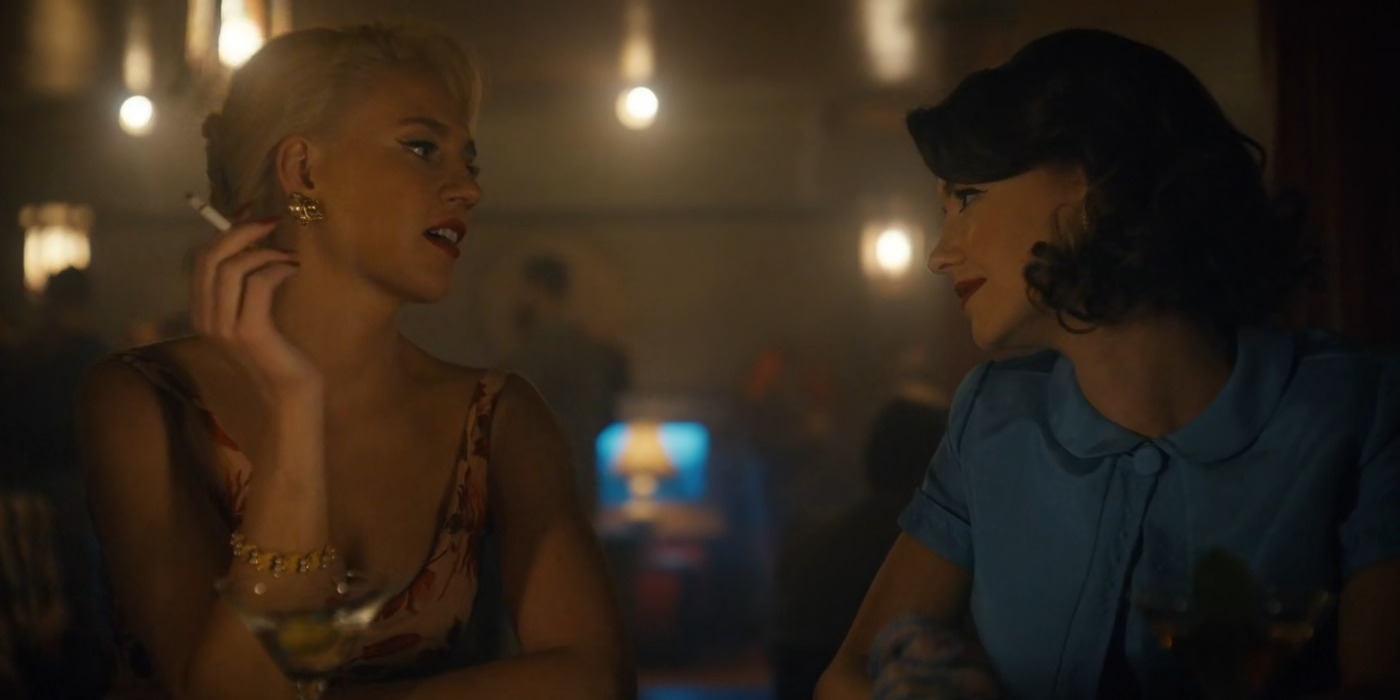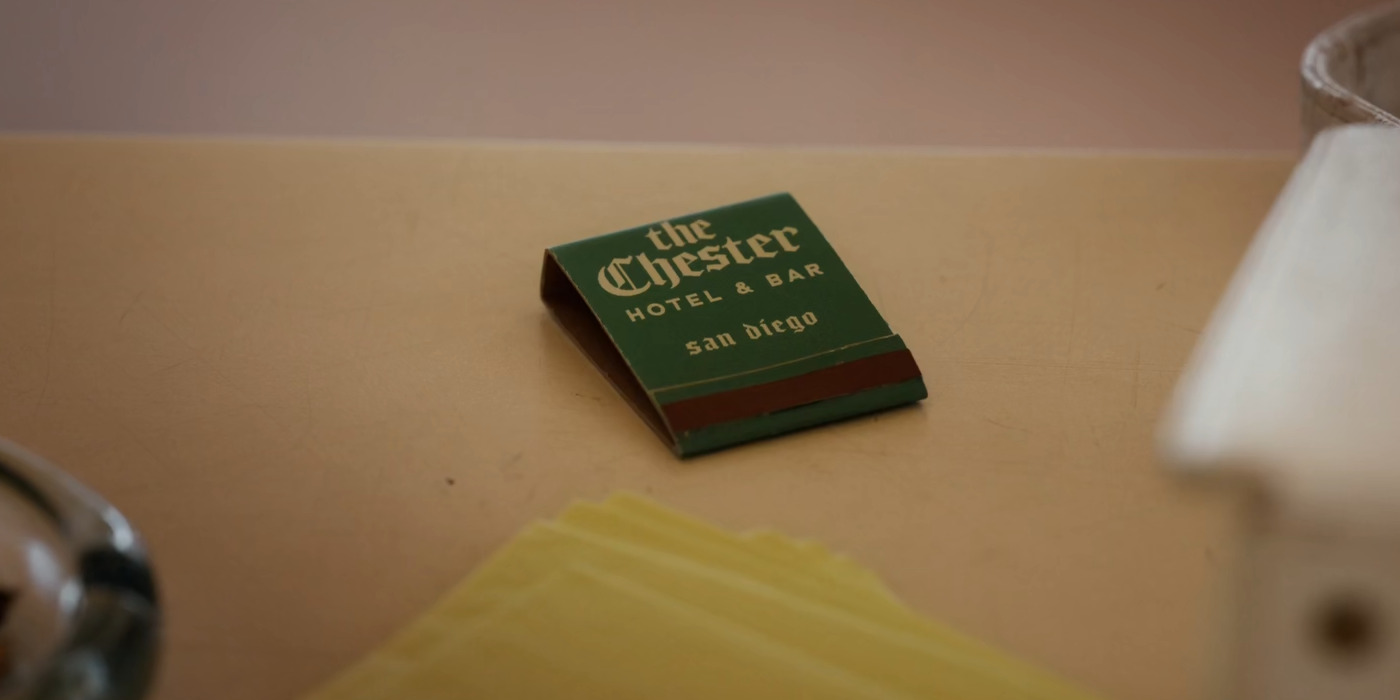‘On Swift Horses’ is a romance drama that dives into the lives of two individuals who are intricately linked by their desire for thrills in life and love. The film revolves around Muriel, whose life shifts on its axis after she meets Julius, the charming brother of her would-be husband, Lee. Although she holds out hope for some connection with the other man, her move to California with her husband soon opens her world up to more marvels. Namely, the electrifying world of betting on horses and her breathtaking next-door neighbor, Sandra. Both these risky gambles inevitably lead her to Chester, the bar in town that is known to be a hangout spot for the underground LGBTQ+ community. Much like Muriel’s domestic life and Julius’ past with the Korean War, this local dive also serves to highlight the periodic setting of the story.
Chester Hotel and Bar is a Fictional Place Inspired By the Real Queer Culture of the 1950s
Even though ‘On Swift Horses’ explores realistic themes against a period backdrop, the film retains no direct inspirations in real life. Therefore, Chester Hotel, an instrumental location in the Muriel and Julius’ tales, remains as fictitious as the story around it. While fans may be able to find similarly titled places in real life, such as the Historic Hotel Chester in Starkville, Mississippi, these places have no direct links to the on-screen bar. Instead, the Chester Hotel in the film remains more closely connected to the numerous real-life underground queer bars that existed across the country in the 1950s, many of which continue to stay in business to this day. San Diego, California, in particular, has an illustrious history with such quietly liberating establishments.
“They (Gay bars) were the one place where queer people could meet and come together (in San Diego),” Frank Nobiletti, a history professor at San Diego State University, told KPBS Public Media in 2011. Typically run by straight allies or simple businesspeople, these locations often run the risk of being on the authorities’ radar, since congregations of the LGBTQ+ community were generally restricted at the time. Even so, many bars managed to stay afloat, providing safe spaces for queer folk and enriching the local underground queer culture. While there were many small places around, The Brass Rail, which opened in 1960, has long been considered the city’s oldest gay bar. Today, the place is simply known as The Rail, and it continues to remain a popular and historical location frequented by the queer community.

Other similar places include The Hole In The Wall, a speakeasy that has been around since Prohibition in the 1920s. Although not originally a gay bar, it established a queer-friendly reputation in the 1940s, which it continues to boast even today. Back in the 50s, places like these provided a safe haven and a common ground for the LGBTQ+ community. Yet, at the same time, such locations also perpetually ran the risk of police raids or worse in accordance with the era’s homophobic systems in place. This unique juxtaposition of safety and danger found in queer bars at the time is encapsulated in the film through The Chester. Thus, despite the lack of a real-life counterpart, the establishment remains an authentic representation, shaping the film’s depiction of queer culture in the 1950s.
Read More: Is Madame Aema a Real Film? Is Shinsung Pictures Based on a Real Production Company?


